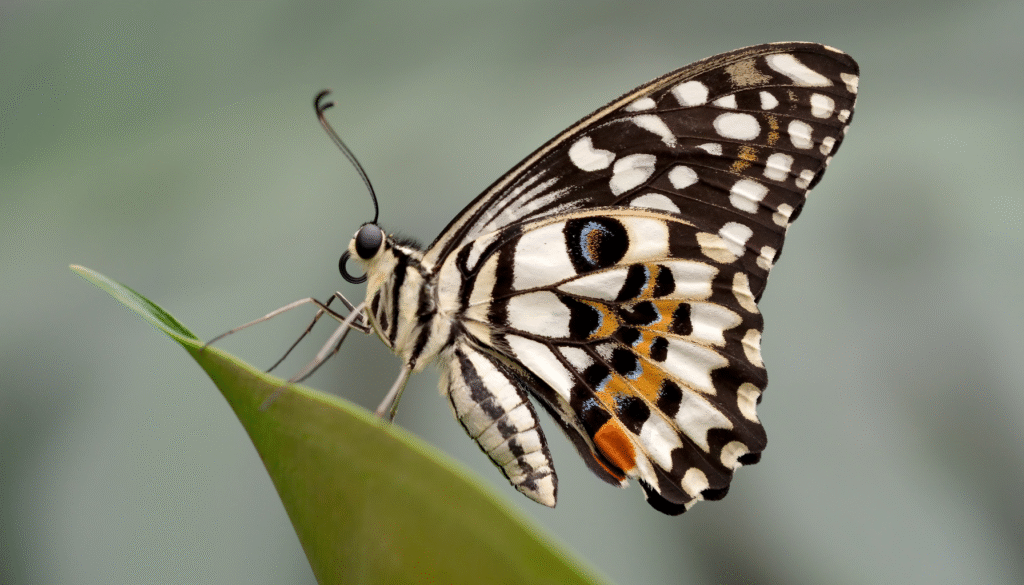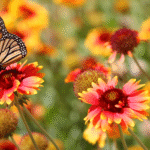Butterfly wings patterns are more than just beautiful — they’re masterpieces of evolution, protection, and communication. If you’ve ever wondered how those intricate designs form, or why some butterflies have eyes on their wings, this article will surprise and delight you.
Better yet, by learning how to attract butterflies to your garden, you can witness these wonders up close — all from the comfort of your own backyard.
The Science Behind Butterfly Wings Patterns
Butterfly wings are covered in thousands of microscopic scales, and each scale reflects light differently based on pigmentation and structure. These patterns serve vital purposes — from camouflage and mate attraction to predator deterrence and temperature control.
Let’s explore the science and curiosity behind these patterns.
How Butterfly Wings Patterns Are Formed
The vibrant and intricate butterfly wings patterns you see are made of overlapping scales arranged like roof tiles. These tiny scales are colored by:
- Pigments that absorb certain wavelengths of light
- Structural coloration, where microscopic ridges scatter light to create iridescent blues, greens, and purples (like on the Morpho butterfly)
During metamorphosis, the genetic instructions of each species tell cells where to place colors, creating symmetrical or asymmetrical designs that are species-specific — almost like fingerprints.
This incredible design process happens while the butterfly is still in the chrysalis, forming weeks before it ever spreads its wings.
Why Butterfly Wings Patterns Matter in Nature
Butterfly wings aren’t just beautiful — they’re functional. Their patterns are tools of survival, used in multiple strategic ways.
Here are the top 5 functions:
- Camouflage: Some butterflies mimic dead leaves, tree bark, or flowers to avoid being seen by predators.
- Warning Coloration: Bright colors like orange and black often signal that the butterfly is toxic or unpalatable (e.g., Monarchs).
- Eyespots: Large circular markings on wings that resemble eyes scare off birds and lizards.
- Mating Signals: Certain UV-reflective patterns are only visible to butterflies, helping them find mates.
- Mimicry: Harmless butterflies copy the colors of poisonous species to deter predators — an evolutionary strategy known as Batesian mimicry.
Bring the Magic to Your Backyard: Gardening for Butterfly Observation
Now that you understand the magic of butterfly wings patterns, what if you could see them in your own garden?
The good news is: you can! Creating a butterfly-friendly garden not only helps the environment, but it also gives you a front-row seat to observe these winged wonders in action.
Best Plants to Attract Patterned Butterflies
If you want to spot butterflies like Monarchs, Swallowtails, and Painted Ladies — all of which have dazzling wings — you’ll need to plant the right flowers.
Here are some butterfly favorites:
- Milkweed (Asclepias spp.) – Monarchs lay eggs here, and their orange/black wings are hard to miss.
- Zinnias – Their wide blooms attract many species with bold wing colors.
- Coneflowers (Echinacea) – Loved by large butterflies like Swallowtails.
- Verbena and Lantana – Nectar-rich and bloom for long periods.
- Asters and Goldenrod – Late-season favorites that draw in migratory species.
Plant flowers in clusters of the same color, and choose a variety that bloom from early spring through late fall. This ensures continuous food sources and regular butterfly traffic.
How to Set Up Your Butterfly Viewing Zone
To truly enjoy observing butterfly wings patterns up close, create a calm, welcoming space in your garden. Here’s how:
- Provide sunlight: Butterflies bask in warm areas to energize.
- Add flat stones: These make great resting spots for butterflies to warm their wings.
- Include puddling areas: Shallow dishes with moist sand and a pinch of salt supply essential minerals.
- Avoid pesticides: Even organic sprays can harm butterflies at different life stages.
Once your garden is set up, keep a small field guide or butterfly ID app handy. You’ll begin to recognize patterns and species quickly!
Ready to See Butterfly Wings Patterns in Real Life?
Butterflies aren’t just a symbol of beauty and transformation — they’re also messengers of ecological health. Their intricate butterfly wings patterns are living art, visible only if we create the spaces they need to survive and thrive.
🌼 Want to see more butterflies in your own garden?
👉 Click here to learn how to build a butterfly-friendly garden in your home and turn your backyard into a pollinator paradise!
The patterns are out there — waiting for you to witness them up close.



